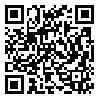BibTeX | RIS | EndNote | Medlars | ProCite | Reference Manager | RefWorks
Send citation to:
URL: http://rehabilitationj.uswr.ac.ir/article-1-682-en.html

 , Roshanak Vameghi
, Roshanak Vameghi 
 , Nadia Azari
, Nadia Azari 
 , Firouzeh Sajedi *1
, Firouzeh Sajedi *1 
 , Anoushiravan Kazem-Nezhad
, Anoushiravan Kazem-Nezhad 

Objective: This research was designed to evaluate the developmental status of children aged 4–60 months in Tehran city by two developmental screening tests, Denver Developmental Screening Test II (DDST II) and Ages and Stages Questionnaires (ASQ) and also to determine the consistency coefficient between these two tests.
Materials & Methods: In this cross–sectional study, DDST II and ASQ were performed on 197 children (104 boys, 93 girls), aged 4–60 months (Mean=23.5 months), at four health centers in Tehran city. Evaluation of 15% of children was repeated by Developmental Pediatricians who were blinded to the screening results.
Results: Developmental disorders were observed in 37% and 18% of children who were examined by DDST II and ASQ tests, respectively. Considering those children who were healthy but their parents were concerned about their developmental status, these figures changed to 38% and 43%, respectively. The estimated consistency coefficient between DDST II and ASQ was 0.21 which is weak (P=0.002) (for gross motor 0.24, language 0.18, personal-social 0.06 and fine motor 0.05). The consistency coefficient between the physicians’ examination with DDST II and ASQ were 0.17 (P=0.099) and 0.47 (P=0.003), respectively.
Conclusion: A weak consistency coefficient was found between DDST II and ASQ tests. Therefore, the results of these two screening tools should be compared with a developmental diagnostic test in order to choose an appropriate screening tool.
Received: 14/11/2010 | Accepted: 19/04/2011 | Published: 21/12/2013
| Rights and permissions | |
 |
This work is licensed under a Creative Commons Attribution-NonCommercial 4.0 International License. |



